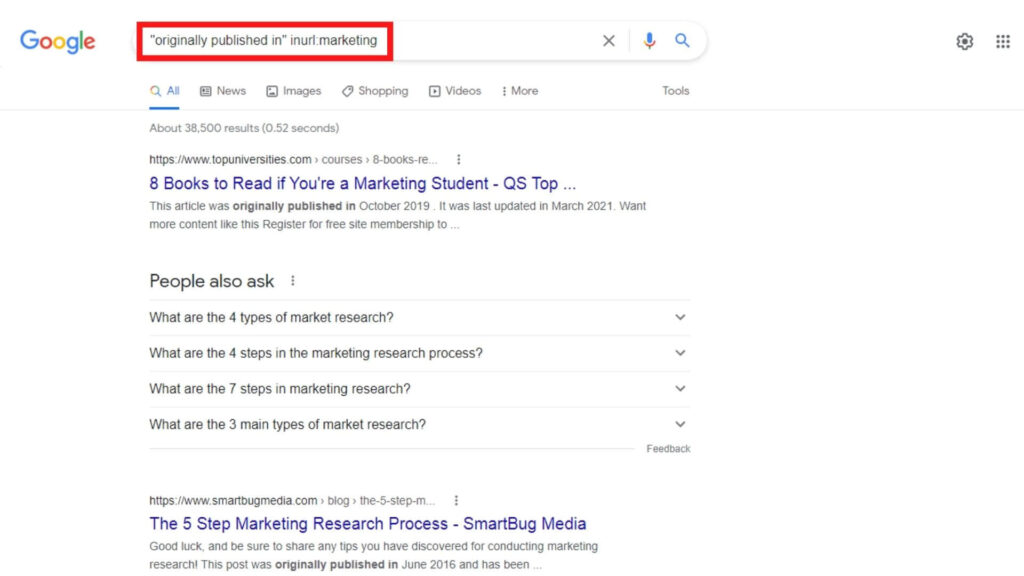What is content syndication? All you need to know
-
Abdul Wadood
Do you want to increase the traffic to your blog in a cost-effective way?
If so, you should try content syndication.
Content syndication is a content marketing strategy that stands out because it’s cost-effective and can increase your brand awareness.
However, if you do content syndication incorrectly, it can negatively impact your website’s SEO.
Ok.
Are you interested to learn about what is content syndication? Also, do you want to learn how to use the strategy correctly?
If so, you have arrived at the correct place.
Topics to be covered in this blog:
What is content syndication?
Content syndication refers to republishing your content on third-party websites to reach more people.
Content syndication is a win-win strategy as it benefits both the third-party website and the content creator. Here’s how.
The third-party website gets new content that will benefit its readers. On the other hand, the content creator gets free exposure and backlinks to his website.
Great!
Content syndication has been around for many years. In fact, this strategy was used by newspaper publishers years before the invention of the internet.
Awesome!
When a third-party website publishes syndicated content, they attribute the original author like this:
“This article was originally published on [example.com] and has been republished here with permission.”
P.S. In the place of [example.com], you should mention the original website name and link the original content.
Does content syndication impact SEO?
According to Google, you should avoid creating duplicate content. I’m pretty sure that many of you would be aware that duplicate content hurts SEO.
But does that mean content syndication hurts SEO?
Fortunately, it’s not the case. Here’s why.
Content syndication is different from duplicate content. When you syndicate content, you indicate to search engines and readers that what they read is syndicated content.
You do this by providing a clear attribution and a backlink to the original content. Also, when you publish syndicate content, you should add the “rel=canonical” tag to the blogs. By doing so, Google can know the original source of the content.
A canonical tag can indicate to Google that a URL is a copy of a particular page. So, when you add the canonical tag to your syndicate blog, Google will understand that your blog isn’t the original version and will rank the original content higher in the search results.
Tips for content syndication
I hope you got a clear idea of whether content syndication impacts SEO. Now, let’s see the tips for content syndication.
1. Plan a strategy to syndicate content
Depending on your end goal, you can syndicate your entire blog or just a part of it on third-party websites.
Before you partner for content syndication, you can discuss how you want to syndicate content with your partner.
You should note that some partners may not agree to syndicate just a part of the content. But, if you write the remaining part of the content yourself, you can make them agree to your request.
2. Find a relevant partner to syndicate content
If you want to see the best results from content syndication, you should syndicate content on websites with a target audience similar to yours.
Also, if possible, you can syndicate content on websites with high domain authority. By doing so, you can reach more people. Moreover, the backlinks they provide to your blog can help to increase its ranking in the search results.
Sometimes, you may not get an opportunity to syndicate content on large websites. In this case, you can syndicate content on smaller websites too.
3. Syndicate third-party content on your website
Content syndication is a two-way strategy. If you allow someone to syndicate your content, you can ask for permission and syndicate their content on your website.
If you have 100 blogs published on your website, 2-5 blogs can be syndicated content, but not more than that.
How to find content syndication partners?
You can find content syndication partners by performing a Google search.
In Google, you can search for queries using phrases likes “republished from”, “originally published in”, etc. You can add inurl:[specificniche] to narrow the search.
Here’s an example.

You can analyze the websites appearing in the search results and approach them for content syndication partnership. Since they allowed the publishing of syndicate content, there’s a high chance for them to allow you to publish syndicated content on their website.
Besides Google search, you can also use the backlink checker of SEO tools like SEMRush, Ubersuggest, Ahrefs, etc., to find content syndication opportunities.
When partnering for content syndication, make sure you choose the right website to syndicate your content.
As mentioned earlier, it’s better if you choose to syndicate content on websites on a niche similar to yours. Also, try to syndicate content on big websites.
If you choose to syndicate your content on a low-quality website with spammy outbound links, your blog’s SEO performance may take a hit.
Ok.
You can also self-syndicate your content on websites like Medium, Quora, LinkedIn, Tumblr, etc.
If you’re a beginner and have a sufficient budget, you can self-syndicate using paid platforms like Taboola, Outbrain, Zemanta, etc. These platforms will display your content as ads across various websites.
When a person clicks on your content (ad), you’ll be charged a specific fee.
Through paid syndication, you can reach a lot of people. But, it doesn’t help SEO much.
Conclusion
Content syndication is a fantastic strategy that lets your content reach many audiences who otherwise would have never known your content existed.
Since content syndication is a win-win strategy, you can easily make a webmaster agree to publish syndicate content on his website — provided your content is high-quality.
If you’re interested, you can also syndicate other websites’ content on your website. By doing so, you can serve fresh content to your readers without spending resources on creating the content.
